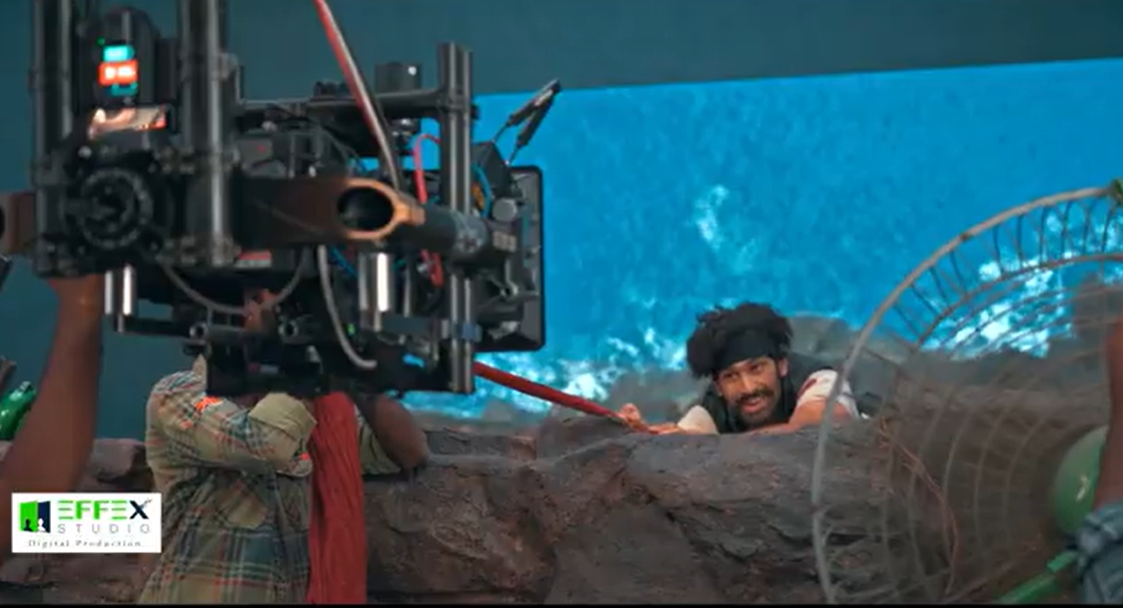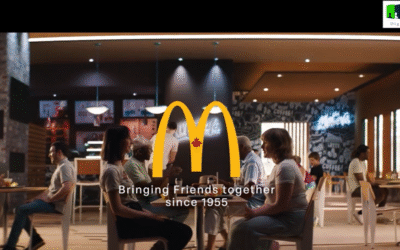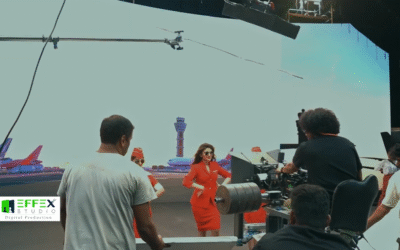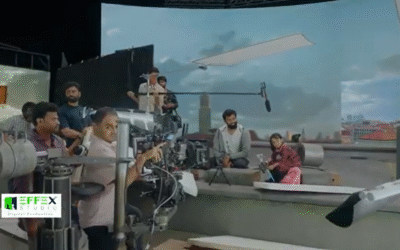Introduction
Reality show advertisements are known for their fast-paced editing, vibrant energy, and need for visual variety. Traditionally, achieving this required multiple location setups, significant travel, and tight post-production timelines. In today’s content-driven era, that model is being replaced. Through virtual set production for ads, producers can now simulate multiple dynamic environments within a single studio setup. This case study outlines how a reality show promo was brought to life using LED volumes, real-time rendering, and in-camera effects—resulting in a seamless, cinematic final cut without ever leaving the studio.
Objective
The objective was to create a lively, environment-rich teaser for a new reality show, while maximizing speed, control, and flexibility. Instead of traveling between real locations, the team opted to simulate multiple outdoor and indoor scenes using virtual set production for ads. This allowed the crew to deliver high-quality visuals with minimal post-processing and a faster production timeline.
Challenges
Reality show ads often involve scene switches, high-energy performances, and frequent background changes. Filming such sequences traditionally means dealing with weather, lighting inconsistencies, and logistical complexity. Additionally, reflective surfaces, moving talent, and tight delivery deadlines make green screen techniques a less attractive solution. To overcome these, the production team embraced virtual set production for ads, which would allow live camera integration with dynamic backgrounds rendered in real time.
Execution Process
1. Pre-Visualization
The ad was mapped through detailed previsualization using digital storyboarding and 3D blocking tools. Transitions between environments, actor positions, and lighting cues were laid out in advance. This stage of virtual set production for ads helped align creative vision across departments, and ensured all transitions and camera paths were tested digitally before the shoot day.
2. Asset Creation
A series of high-fidelity 3D environments—including an urban plaza, a beach setting, and a concert-style stage—were built in Unreal Engine. Each asset came with its own lighting presets, reflections, and color profiles tailored to enhance the talent’s on-screen energy. These scenes were optimized for LED wall playback with reactive lighting for realistic results.
3. Technical Setup
A curved LED volume surrounded the stage area, displaying the virtual backgrounds in high resolution. Cameras were mounted with motion-tracking systems to sync their physical movement with the digital space. This setup allowed for real-time parallax and lighting changes, which are foundational to virtual set production for ads. Actors could perform naturally, and the scene would update around them without relying on post-production compositing.
4. Virtual Scouting
Using VR headsets and large-format preview monitors, the director and cinematographer explored each digital scene in advance. This allowed them to finalize light positions, camera framing, and movement paths while still in the planning phase. It also ensured the performance beats aligned perfectly with scene transitions—a key advantage of virtual set production for ads workflows.
5. In-Camera VFX Capture
On shoot day, actors performed in sync with shifting LED backdrops. As the camera tracked their movement, the virtual environments updated in real time. Light from the LED walls illuminated the performers naturally, making it appear as though they were in the environment itself. Because everything was captured in-camera, the production avoided extensive keying and digital compositing.
6. Post-Production
With most effects captured live, post-processing was limited to mild color correction and graphical overlays. No background replacements or chroma key adjustments were necessary. This dramatically shortened the edit timeline, allowing for multiple deliverables to be completed quickly.
Conclusion
This reality show promo exemplifies the power of virtual set production for ads. By bringing together LED walls, real-time rendering, and motion tracking, the creative team simulated multiple high-energy locations in a single studio setup. The approach offered a scalable, efficient alternative to traditional outdoor production—while still maintaining the cinematic quality expected in today’s entertainment marketing.
Key Takeaways
- Virtual set production for ads enables multi-scene flexibility from one studio
- Real-time rendering enhances lighting accuracy and environmental depth
- Previz tools align creative direction before physical production
- In-camera capture removes dependency on post-heavy pipelines
- Ideal for reality shows, music videos, and fast-paced content
- Streamlines cost, logistics, and turnaround without creative compromise



